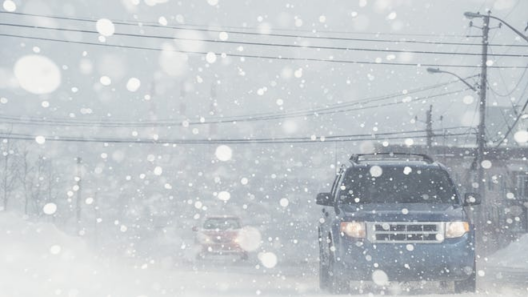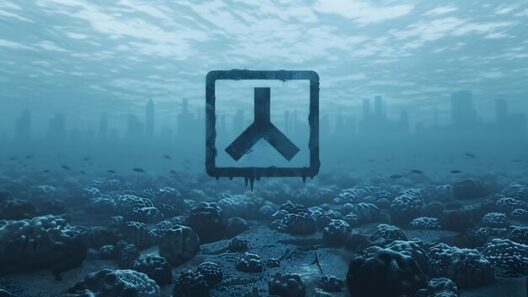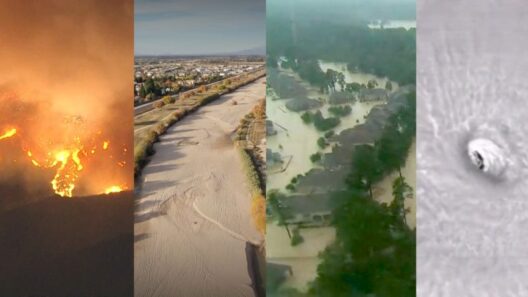Water, water everywhere? This phrase elicits imagery of boundless oceans, shimmering lakes, and flowing rivers, yet it poses an intriguing challenge: is our water supply truly secure in the face of global warming? As climate change exacerbates the unpredictability of weather patterns and ecological systems, the future of our water resources is under significant threat. Understanding how global warming impacts our water supply is crucial not only for our survival but for the health of our ecosystems.
The water cycle is a delicate system, continuously replenishing and redistributing this vital resource across the globe. However, global warming disrupts this equilibrium, instigating profound alterations in precipitation patterns and water availability. The increasing concentration of greenhouse gases in the atmosphere leads to heightened temperatures, which in turn evaporates moisture faster, prompting erratic weather phenomena and imbalances in hydrological systems.
One of the most pressing consequences of these disruptions is the escalation of extreme weather events. Flooding, droughts, hurricanes, and heavy rainfall have all intensified as a result of climate change. For instance, regions that once enjoyed moderate rainfall have transitioned to erratic deluges or prolonged arid spells. This duality presents a paradox: while some areas may experience excess water leading to floods, others grapple with water scarcity. This uneven distribution presents significant implications for agriculture, drinking water supplies, and overall ecosystem health.
Rivers and lakes are becoming increasingly susceptible to climate change, with shifts in temperature, flow rates, and sediment loads. Warmer water temperatures can lead to reduced oxygen levels, creating inhospitable conditions for aquatic life. Furthermore, alterations in flow patterns can intensify the strains placed on dam systems and reservoirs, endangering the effectiveness of our water management strategies. As glacial and snowpack reserves diminish due to rising temperatures, communities that rely on these sources will face challenges in ensuring a consistent supply of freshwater.
Groundwater, often seen as a reliable backup water system, is also not immune to the impacts of climate change. Over-extraction of aquifers, combined with increased evaporation and decreased replenishment rates caused by changing precipitation patterns, may lead to significant depletion. Many regions already struggle with groundwater depletion, which poses a serious challenge to agricultural sustainability. Plants rely on stable moisture levels from the soil, yet as groundwater levels drop, crop yields falter, leading to food security issues.
In addition to physical water availability, the quality of water sources is also being compromised. Higher temperatures can foster the proliferation of harmful algal blooms in lakes and rivers, which can produce toxins detrimental to human health and biodiversity. Furthermore, increased rainfall often leads to runoff that transports pollutants into waterways, exacerbating issues of contamination and endangering aquatic ecosystems. Consequently, our access to safe and clean water is becoming more precarious.
As we consider the future of our water supply, the question begs: how can communities and policymakers adapt to these challenges? The integration of innovative management strategies is imperative. Sustainable approaches to water conservation and usage, such as rainwater harvesting, greywater recycling, and the implementation of permeable surfaces to promote groundwater recharge, offer promising avenues to mitigate the impending water crisis.
Moreover, the role of education and advocacy cannot be understated. Raising awareness about the impacts of climate change on water resources is essential for galvanizing community action. Citizen involvement in conservation efforts, from reducing personal water consumption to promoting native landscaping, plays a pivotal role in fostering resilience against climate-induced water challenges.
Adaptation is also key. Investing in infrastructure improvements, such as modernizing irrigation systems and reinforcing flood defenses, can help communities withstand the shocks of a changing climate. The reliance on traditional, outdated systems may no longer suffice in a world where climate unpredictability reigns. Collaborative efforts among governmental institutions, businesses, and non-profits can drive the implementation of sustainable practices and policies that prioritize water security.
International cooperation is vital in addressing transboundary water issues, as rivers and lakes do not adhere to geopolitical boundaries. Ensuring equitable access to shared water resources while meeting the diverse needs of different nations requires diplomatic dialogue and innovative conflict resolution strategies. The water crises faced in various regions exemplify the urgent need for a unified approach to water management in the context of climate change.
Critically, the conversation surrounding water supply and climate change must involve marginalized communities, as they are often the most vulnerable to these challenges. By ensuring inclusivity in decision-making processes, communities can develop tailored solutions that address their unique needs and circumstances, enhancing overall resilience.
In conclusion, while the phrase “water, water everywhere” evokes a sense of abundance, the reality of global warming presents a stark contrast. The threats posed to our water supply are multifaceted, necessitating an integrated approach that considers environmental, social, and economic dimensions. By prioritizing sustainable practices, investing in innovative solutions, and fostering collective action, we can navigate the future challenges posed by climate change and work towards a more secure and equitable water supply for generations to come.








